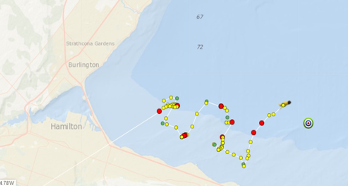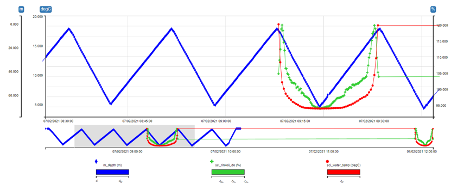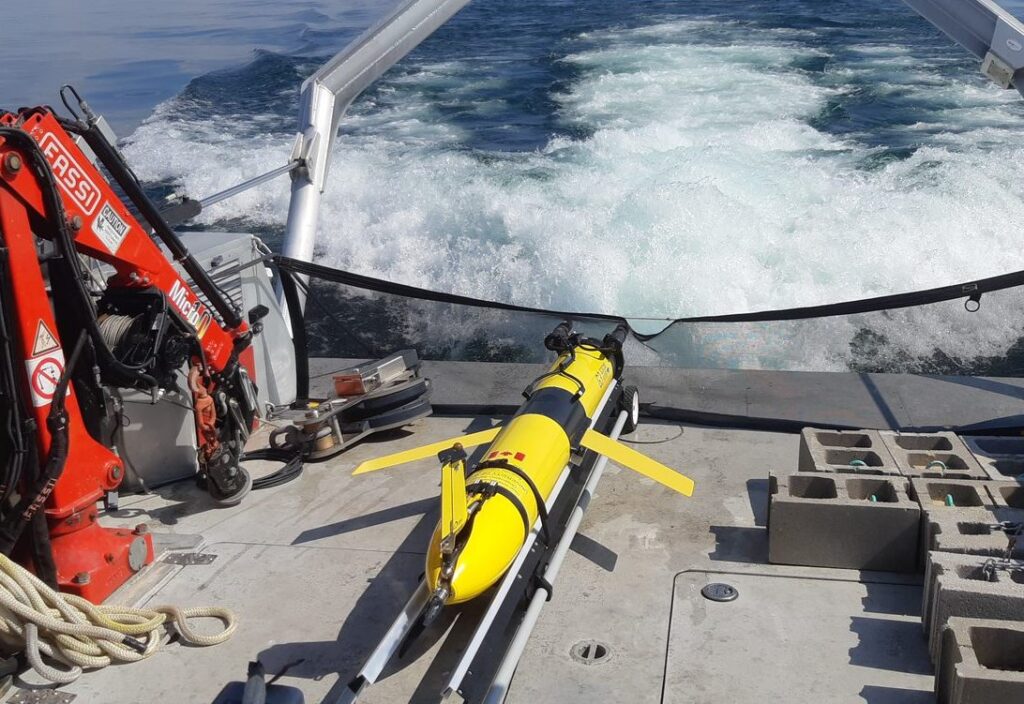Continuous monitoring will provide data needed to help protect ecosystems
Scientists deployed an autonomous underwater vehicle to continuously collect high-resolution spatial and temporal data in Lake Ontario to better understand key lake processes, including currents, primary productivity, and the distribution of phytoplankton and zooplankton. The vehicle, a Slocum glider, is able to collect data 24 hours a day while moving through the western basin of the lake, providing a much more comprehensive dataset compared to other sampling methods. The glider is also gathering data on the deep chlorophyll layer which plays a critical role in food webs and energy transfer within the lake, a process that requires more study and better understanding. Scientists launched the first of three planned Slocum glider missions in late June 2021; future missions are planned over the next several months, and this work will continue over the next few years.
The data collected will help protect valuable ecosystem services in Lake Ontario. Daily, monthly, and seasonal data collected across space and time will improve understanding of lake processes and lead to better models for predicting change, particularly related to climate. Ultimately, this information will contribute to improved management. For example, the base of the food web in the lake supports the $70-million a year salmonid fishing industry. The results also have implications for ensuring water security – Lake Ontario provides an important source of drinking water to the Greater Toronto Area.
Fisheries and Oceans Canada (DFO) is providing logistical support and partial funding under a collaborative agreement with the University of Windsor and RAEON. This project marks the first time Canadian scientists are using gliders to collect this type of data in Lake Ontario.



